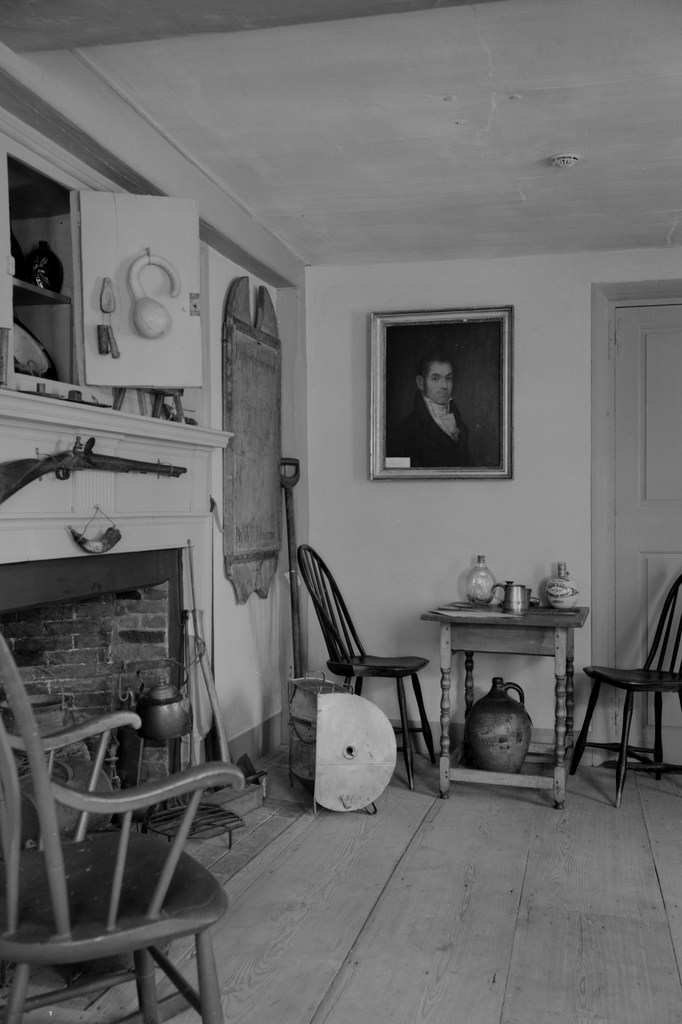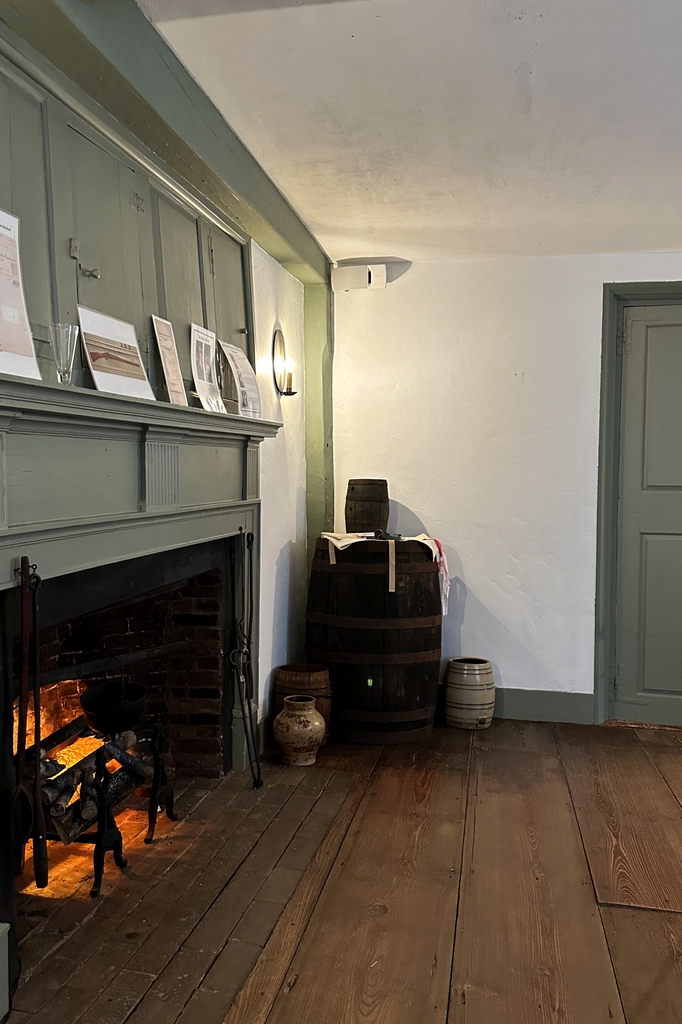The bar room at Munroe Tavern in Lexington, probably around 1940. Image courtesy of Phillips Library, Peabody Essex Museum, Samuel Chamberlain Photograph Negatives Collection.
The scene in 2023:
As explained in more detail in the previous post, Munroe Tavern is an important historic landmark due to its involvement in the start of the American Revolution. On April 19, 1775, during the battles of Lexington and Concord, Earl Percy commandeered the tavern to use as his temporary headquarters and as a field hospital.
Here in the bar room, wounded redcoats received medical attention while others helped themselves to the tavern’s food and drink. One redcoat apparently fired his gun into the ceiling, and the portion of the plaster with the hole has been preserved in its original location, although it is not visible in these photos. The redcoats spent about two hours here before continuing their retreat to Boston. On their way out, they stacked the furniture in the center of the room and lit it on fire, but it was quickly extinguished after they left.
The building remained in use as a tavern until around 1850, and it was subsequently converted into a house. Around 1860 it underwent significant modernizations on both the interior and exterior. This occurred during the ownership of William Henry Munroe, grandson of the William Munroe who had operated the tavern during the Revolution. He lived here until his death in 1902, and then in 1911 the tavern was acquired by the Lexington Historical Society.
In 1939, the Lexington Historical Society extensively restored the tavern on both the interior and exterior. The top photo was likely taken soon after this work was completed, and it shows a portion of the room, including the fireplace. According to the 2010 document Historic Structure Report: The Munroe Tavern, Lexington, Massachusetts, much of the existing material in the room dates to the 1939 restoration, including the floorboards, the doors, windows, window trim, hardware, and the plaster ceiling. However, there are still some original features. The framing is presumably original, along with the cupboards over the mantel and the bricks in the firebox. The mantel itself is not original, but it likely dates to around the 1790s, according to the historic structure report.
Today, more than 80 years after the room was restored, not much has changed here other than moving around the furnishings. Probably the most significant object in the top photo is the original tavern sign, which hung outside of the building in 1775. Although badly faded, it is still legible. It has an image of a punch bowl, and it reads “Entertainment By Wm. Munroe.” The sign is visible in the top photo on the right side of the fireplace, and it is still in the room, but it is on the opposite wall now.
The tavern is still owned by the Lexington Historical Society, which has also preserved Buckman Tavern and the Hancock-Clarke House. All three of the buildings played important roles in the events of April 19, 1775, and all three are open to the public seasonally for tours.


